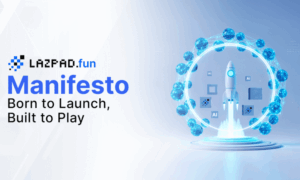Cybersecurity threats have become more sophisticated and dangerous as the world becomes increasingly digital. To protect valuable data and ensure business continuity, it’s important to implement effective cybersecurity solutions such as Endpoint Detection and Response (EDR), Extended Detection and Response (XDR), and Managed Detection and Response (MDR). In this blog, we’ll explore these solutions and how The ThreatHunter.ai team of expert threat hunters uses our proprietary Argos Platform® to effectively combat cyber threats.
As cyber threats continue to evolve and become more sophisticated, it has become increasingly important for organizations to have a robust and effective security strategy in place. One approach that has emerged in recent years is using endpoint detection and response (EDR) solutions. However, as the threat landscape expands and becomes more complex, the need for more advanced solutions has become apparent – enter XDR and MDR. This article will examine these two security concepts and explore how The ThreatHunter.ai’s Argos Platform® leverages XDR and MDR to provide comprehensive threat detection and response capabilities.
Introduction
Explanation of EDR, XDR, and MDR
Endpoint Detection and Response (EDR) is an endpoint security solution that detects, investigates, and mitigates suspicious activities and threats on endpoints such as laptops, servers, and desktops. Extended Detection and Response (XDR) is an evolution of EDR that extends the detection and response capabilities to other parts of the network, such as cloud and on-premise environments. Managed Detection and Response (MDR) is a managed security service that leverages EDR and XDR technologies to detect and respond to cybersecurity threats.
Importance of implementing these solutions
Cybersecurity threats can cause significant disruptions to business operations and lead to data loss, intellectual property theft, and reputational damage. Implementing EDR, XDR, and MDR is essential for detecting, mitigating, and preventing cybersecurity attacks.
Brief overview of The ThreatHunter.ai and Argos Platform
The ThreatHunter.ai team of expert threat hunters uses our proprietary Argos Platform® to deliver our client’s EDR, XDR, and MDR services. The Argos Platform® is an advanced cybersecurity platform that leverages artificial intelligence and machine learning algorithms to detect and respond to threats in real time.
EDR – Endpoint Detection and Response
Definition and explanation of EDR
Endpoint Detection and Response (EDR) solutions help organizations detect and respond to threats on endpoints such as laptops, servers, and desktops. EDR collects data from endpoints and analyzes it to detect suspicious activities and threats. When a threat is identified, EDR takes an automated response action, such as isolating the endpoint, blocking network access, or terminating a process.
Features and benefits of EDR
EDR solutions provide a range of features and benefits for organizations, including:
- Real-time threat detection and response
- Automated threat remediation
- Endpoint visibility and control
- Behavioral analysis and anomaly detection
- Advanced analytics and reporting
How the ThreatHunter.ai’s Argos Platform® implements EDR
The ThreatHunter.ai’s Argos Platform® provides advanced EDR capabilities that leverage artificial intelligence and machine learning algorithms to detect and respond to advanced threats in real time. The platform collects endpoint data and analyzes it to detect anomalies and suspicious activities. Argos Platform® takes an automated response action when a threat is identified, such as isolating the endpoint and blocking network access.
Use cases and examples of successful EDR implementation
The ThreatHunter.ai team has successfully implemented EDR solutions for various organizations across various industries, including finance, healthcare, and manufacturing. In one example, a healthcare provider was experiencing frequent ransomware attacks that were disrupting their operations. The ThreatHunter.ai team implemented an EDR solution that detected and responded to threats in real-time, significantly reducing ransomware attacks and improving business continuity.
XDR – Extended Detection and Response
Definition and explanation of XDR
XDR, or Extended Detection and Response, is a next-generation security solution with a more holistic threat detection and response approach. Rather than focusing solely on endpoints, XDR seeks to integrate data across the entire IT environment – from endpoints and servers to cloud services and applications – to provide a complete picture of potential threats.
Features and benefits of XDR
One of the key features of XDR is its ability to aggregate and analyze threat data from multiple sources. Combining information from multiple security tools allows XDR to identify and respond to threats more quickly and effectively. Additionally, XDR solutions often feature advanced analytics and machine learning capabilities, allowing for even greater accuracy in threat detection.
XDR can help organizations better understand and mitigate security risks by providing a more comprehensive view of the IT environment. This can lead to a reduction in the overall number of security incidents and improved incident response times.
How the ThreatHunter.ai’s Argos Platform® implements XDR
The ThreatHunter.ai’s Argos Platform® is a powerful XDR solution that leverages machine learning and advanced analytics to provide comprehensive threat detection and response capabilities. By aggregating data from across the entire IT environment, including endpoints, servers, cloud services, and applications, Argos can provide a complete view of potential threats.
In addition to its advanced analytics and machine learning capabilities, Argos incorporates powerful automation features that enable it to respond to threats in real time. This can help significantly reduce security incidents’ impact and minimize downtime and data loss.
Use cases and examples of successful XDR implementation
The ThreatHunter.ai’s Argos Platform has been used successfully across various industries and organizations. In one recent case study, a large financial institution improved its incident response times by up to 50% after implementing Argos. By leveraging the power of XDR, the organization was able to quickly identify and respond to security incidents, preventing widespread breaches and minimizing downtime.
MDR – Managed Detection and Response
Definition and explanation of MDR
While XDR takes a more holistic approach to threat detection and response, MDR – or Managed Detection and Response – is focused primarily on the detection and response aspect of security. MDR providers typically offer 24/7 monitoring and response services and rely on advanced analytics and machine learning to detect potential threats.
Features and benefits of MDR
One of the key features of MDR is its focus on the detection and response aspect of security. By offering 24/7 monitoring and response services, MDR providers can help to mitigate the impact of security incidents and prevent breaches before they occur. Additionally, MDR providers often incorporate advanced analytics and machine learning capabilities, enabling them to detect threats more accurately and respond more quickly.
How the ThreatHunter.ai’s Argos Platform implements MDR
The ThreatHunter.ai’s Argos Platform® incorporates powerful MDR features, including 24/7 monitoring and response services and advanced analytics and machine learning capabilities. By leveraging these features, Argos can quickly detect and respond to potential threats, helping minimize security incidents’ impact and prevent breaches before they occur.
Use cases and examples of successful MDR implementation
Various organizations and industries have successfully utilized ThreatHunter.ai’s Argos Platform®. In one recent case study, a large healthcare provider significantly reduced the number of security incidents they experienced after implementing Argos. By leveraging MDR’s power, the organization could quickly detect and respond to potential threats, preventing major breaches and minimizing downtime.
Advantages and Disadvantages
EDR:
EDR is an endpoint security solution focused on detecting and responding to threats already present on the endpoint. It detects malicious activity by analyzing the endpoint’s behaviour, file activity, and network traffic, among other things.
Advantages:
- Provides deep visibility into endpoints
- Detects advanced malware
- Detects and responds to threats in real-time
- Can integrate with other security solutions to form a multi-layered approach to security
Disadvantages:
- Can generate false alerts
- Has limited threat intelligence capabilities
- Can be complex to manage and use
XDR:
XDR is an endpoint security solution that goes beyond EDR; it collects data from different sources in the organization, such as endpoints, network devices, and cloud applications, to detect and respond to threats across all platforms.
Advantages:
- Provides a holistic view of all endpoints
- Reduces threat response time by correlating data from different sources
- Offers better threat intelligence capabilities
- Can integrate with other security solutions to form a multi-layered approach to security
Disadvantages:
- Can generate false alerts
- Can be challenging to manage and use
- Can be costly to implement
MDR:
MDR is a managed endpoint security solution where a third-party service provider manages security operations for an organization. The service provider is responsible for detecting, investigating, and responding to potential threats on the endpoint.
Advantages:
- Provides round-the-clock threat monitoring
- Offers faster detection and response to threats
- Is managed by experts who are up to date with current threats
- Provides a robust threat intelligence capability
Disadvantages:
- Can be expensive
- Decisions and actions taken by the service provider may not align with the organization’s business objectives
- Communication and coordination can be challenging between the service provider and the organization.
Recommendations on Which Approach to Use Based on Different Scenarios
The selection of an endpoint security solution depends on several factors, including the organization’s size and structure, the complexity of the IT infrastructure, and the budget. Here are some recommendations on when to use one solution over the others:
EDR suits small to medium-sized organizations with simple IT infrastructure, limited budget, and in-house security expertise.
XDR is a good choice for medium to large-sized organizations with a complex IT infrastructure, a budget to acquire and manage an advanced security solution, and an experienced IT security team.
MDR is best suited for large to enterprise-level organizations that lack in-house security expertise, have complex IT infrastructures, and require round-the-clock threat monitoring and management.
How the Threathunter.Ai’s Argos Platform Can Provide All Three Solutions
ThreatHunter.ai’s Argos Platform® is a comprehensive, cloud-based endpoint security solution that provides all three endpoint security solutions – EDR, XDR, and MDR.
The Argos Platform® collects and correlates data from all sources, including endpoints, network devices, and cloud applications, to detect potential threats. With round-the-clock managed services, it provides real-time threat detection, investigation, and response capabilities.
Additionally, the Argos Platform® is easy to use, with an intuitive user interface that does not require in-depth IT security knowledge to operate. It eliminates false alerts by using advanced machine-learning techniques.
Conclusion
In conclusion, endpoint security is critical to securing organizational assets and data from potential cyber threats. Choosing the right approach depends on the organization’s size and complexity, IT infrastructure, and budget.
ThreatHunter.ai’s Argos Platform® provides a comprehensive, easy-to-use endpoint security solution that offers all three endpoint security solutions – EDR, XDR, and MDR. Switching to the Argos Platform® can provide the best cybersecurity protection at a fraction of the cost.
Selecting the right endpoint security solution for your organization is crucial to ensure that you are adequately protected from cyber threats. Don’t wait for a data breach to happen before taking action; make the right decision today by switching to the Argos Platform.
In conclusion, implementing effective cybersecurity solutions such as EDR, XDR, and MDR is critical for protecting valuable data and ensuring business continuity. The ThreatHunter.ai team of expert threat hunters uses our proprietary Argos Platform® to deliver our clients advanced EDR, XDR, and MDR services. Our solutions provide the following:
- Real-time threat detection and response.
- Automated threat remediation.
- Advanced analytics and reporting capabilities.
Contact us today to learn how we can help you protect your organization from cyber threats.





























